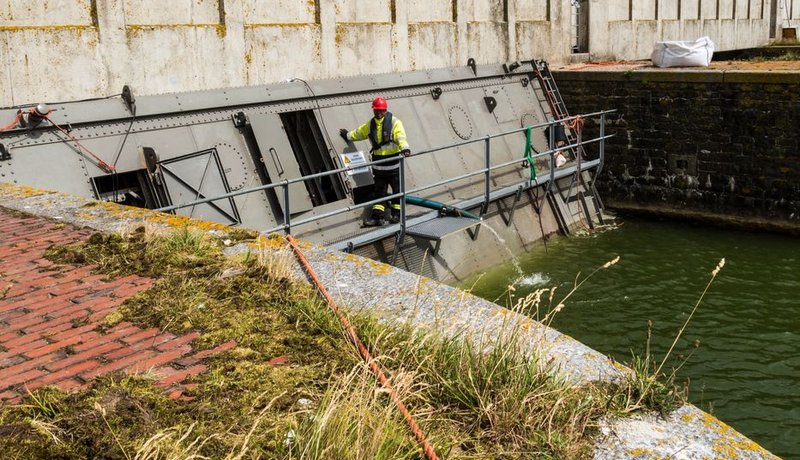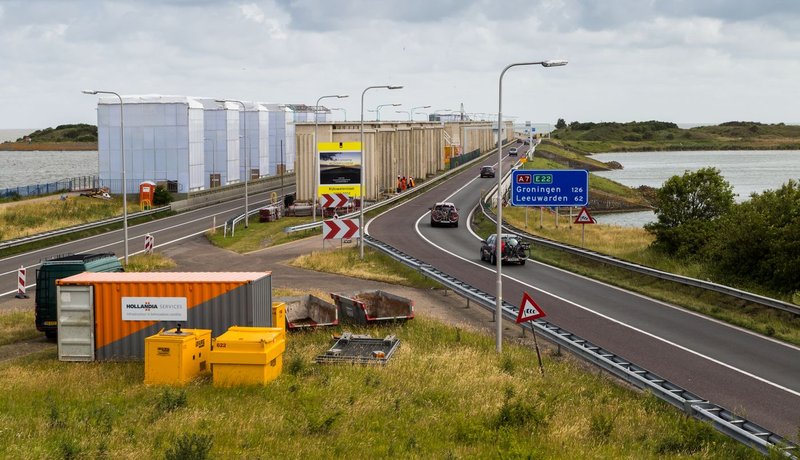25 immense waterspouts (= metal cladding connecting the inboard and outboard scuppers) in the Afsluitdijk control the water level in the IJsselmeer. Massive sliders block the water from the Wadden Sea on the one hand and let the water out via the hinterland on the other. Even after 85 years, the waterspouts still function as intended. But that does require maintenance. The combination of Croonwolter&dros and Arcadis, together with Hollandia Services, perform this maintenance.
They do this on a risk-driven basis. Recently, two waterspouts were drained; the third will follow shortly.
Impressive piece of work
The tubes are in the Afsluitdijk, four metres under NAP. Each waterspout is 12 metres wide and 7.5 metres deep and is closed by two massive slides. The tubes date back to the construction of the Afsluitdijk and are now 85 years old. They were built ‘in the dry’, under the supervision of engineer Lely. It’s an impressive piece of work, especially when you consider that people back then had far fewer resources at their disposal. Computers and advanced measuring equipment were not yet available and everything was first built and tested to scale. The bottom of the waterspouts is made of brickwork. The gates were riveted from steel by Werkspoor in Amsterdam in 1931 and weigh 32 tonnes each. The guide rails on which they move up and down are mounted cold on natural stone.
For this renovation, Rijkswaterstaat investigated the state of the concrete in the waterspouts. Croonwolter&dros, Arcadis and Hollandia Services took stock of the condition of the guide rails: had they been damaged by corrosion? What about the anchors? And are the seals on the lift doors in good order? The motors were overhauled two years ago and the gates about ten years ago.
Risk-based maintenance
Maintenance and renovation of the sluice boxes is carried out on the basis of functionality. We check whether the object is still functioning as intended and whether it will continue to do so for a certain period of time. To this end, inspections are carried out and faults are analysed and this data is compared with the Reliability Centred Maintenance (RCM) model that forms the basis of the maintenance regime. This makes it possible to assess when maintenance is required. This risk-driven approach means that, from now on, major maintenance will not be performed on all cylinders at fixed intervals. There will be a real assessment of whether it is necessary. We also take account of the fact that the entire dike will be reinforced to cope with the consequences of climate change in the long term.
Special project
It’s clear that the Afsluitdijk is a particularly large project. All hands are being employed to ensure reliable water management.



